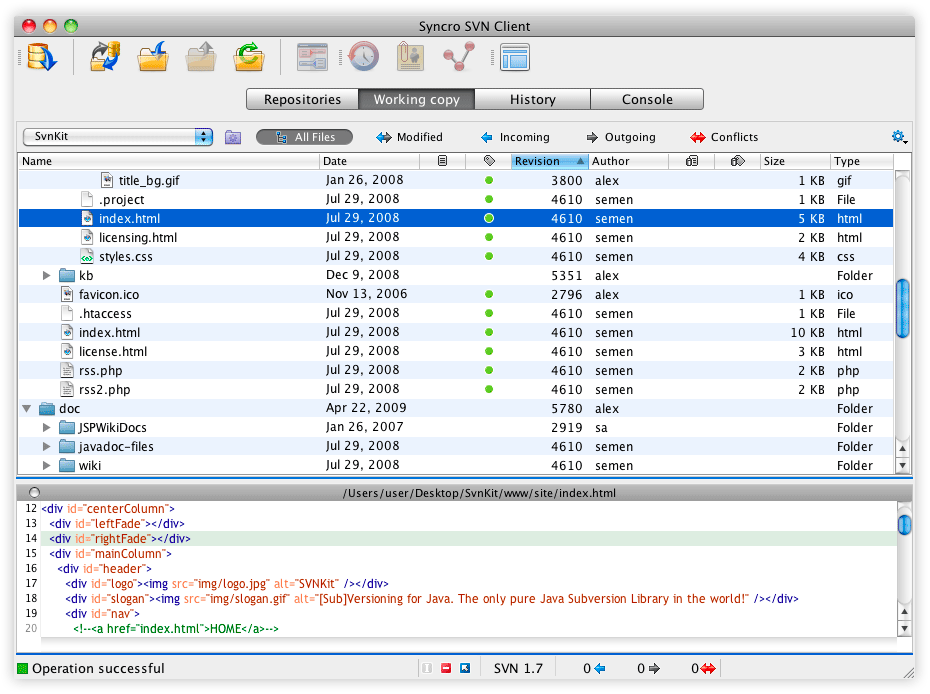

To remove scripts folder from version control do: $ svn rm scriptsĬommit changes to the server: $ svn ci -m "#no_task deleting scripts".

SVN rm – Remove files and directories from version control To get back to the newest revision, we don’t need to checkout again, but simply update: $ svn upĪnd we see that scripts folder is back. The scripts folder is gone, as it did not exist on revision 26. If we list items under the local working directory again, we’ll notice the following: $ ls We can checkout a specific revision copy, 26 in this case, from the server by adding a revision number: $ svn co. Many bad things can happen, files get infected or corrupted, and sometimes there’s a need to get to the last know non-infected or non-corrupted copy. So we have a python script that came with revision 26, and a scrips folder that was created afterwards, revision 27. Let’s see how our local copy looks like: $ ls

SVN co – Check out a specific revision copy from a repository
Svn client on linux update#
We can use svn update command to bring changes from the repository into the working copy: $ svn upĭisplay working directory info again: $ svn info. Last Changed Date: 18:31:14 +0000 (Thu, ) SVN up – Bring changes from the repository into the working copy We can also check other files and folders individually by specifying them: $ svn info scripts SVN info – Display information about a local or remote itemĬheck local working directory: $ svn info. If we check svn status now, it should return nothing as no changes are made: $ svn status. SVN ci – Send changes from your working copy to the repositoryĬommit changes to the server: $ svn ci -m "#no_task adding script folder". That’s what we just did, created a new directory for scripts. We see that scripts is added (“A”) to version control. SVN status – Print the status of working copy files and directories URL can also be used to create a remote directory if needed. SVN mkdir – Create a new directory under version controlĬreate a new directory for scripts: $ svn mkdir. Īs we may see below, there’s just one Python script checked out from the repository: $ ls Let’s checkout the latest version copy from the SVN server: $ svn co. SVN Usage SVN co – Check out a working copy from a repository Starting this point, we’ll be working inside ~/svn/myproject. Let’s create a myproject directory for our svn project: $ mkdir -p ~/svn/myprojectĬhange to svn directory: $ cd ~/svn/myproject Open ~/.subversion/servers file and set the following parameters if needed:
Svn client on linux password#
Open ~/.subversion/config file and set password store to gnome-keyring: password-stores = gnome-keyring Keyrings will be stored under ~/.gnome2/keyrings/.
Svn client on linux install#
We’ll use gnome keyring to store SVN passwords (another option would be kwallet): # apt-get install gnome-keyring Install subversion if not yet installed: # apt-get update & apt-get install subversion Working with Linux SVN client the simple way.


 0 kommentar(er)
0 kommentar(er)
